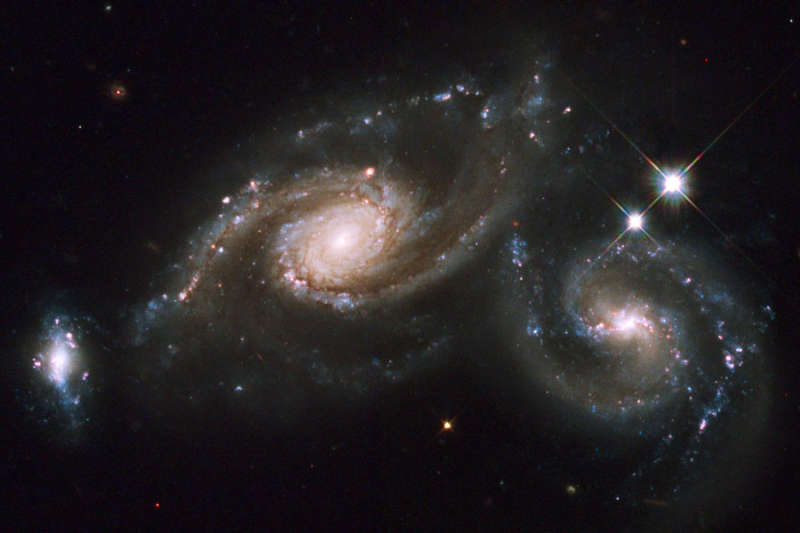
|
Explanation: Two galaxies are squaring off in Virgo and here are the latest pictures. When two galaxies collide, the stars that compose them usually do not. This is because galaxies are mostly empty space and, however bright, stars only take up only a small fraction of that space. But during the collision, one galaxy can rip the other apart gravitationally, and dust and gas common to both galaxies does collide. If the two galaxies merge, black holes that likely resided in each galaxy center may eventually merge. Because the distances are so large, the whole thing takes place in slow motion -- over hundreds of millions of years. Besides the two large spiral galaxies, a smaller third galaxy is visible on the far left of the above image of Arp 274, also known as NGC 5679. Arp 274 spans about 200,000 light years across and lies about 400 million light years away toward the constellation of Virgo.
|
January February March April May June July August September October November December |
| ||||||||||||||||||||||||||||||||||||||||||||||||
NASA Web Site Statements, Warnings, and Disclaimers
NASA Official: Jay Norris. Specific rights apply.
A service of: LHEA at NASA / GSFC
& Michigan Tech. U.
Based on Astronomy Picture
Of the Day
Publications with keywords: colliding galaxies
Publications with words: colliding galaxies
See also:
- APOD: 2025 May 7 Á Galaxy Wars: M81 versus M82
- APOD: 2024 July 30 Á Arp 142: Interacting Galaxies from Webb
- APOD: 2023 September 25 Á Arp 142: The Hummingbird Galaxy
- APOD: 2023 January 23 Á The Colliding Spiral Galaxies of Arp 274
- Galaxy Wars: M81 and M82
- NGC 1316: After Galaxies Collide
- NGC 4676: When Mice Collide
